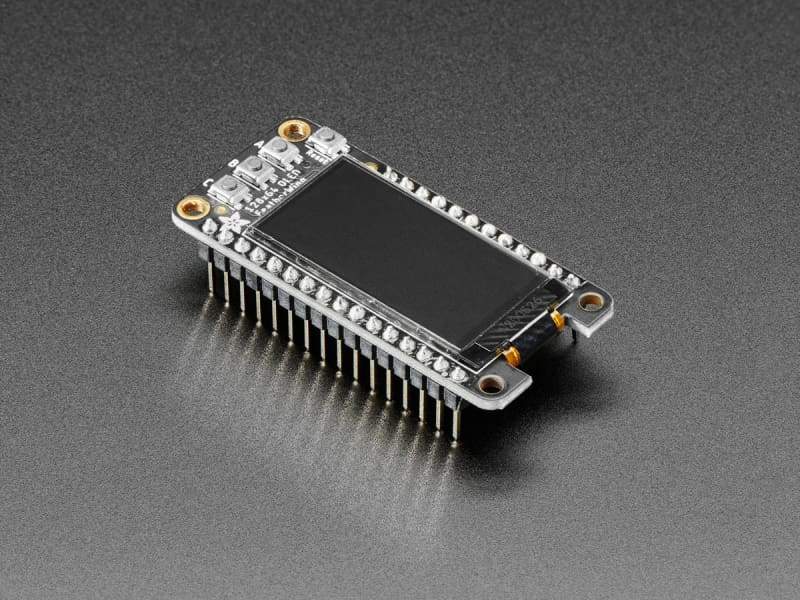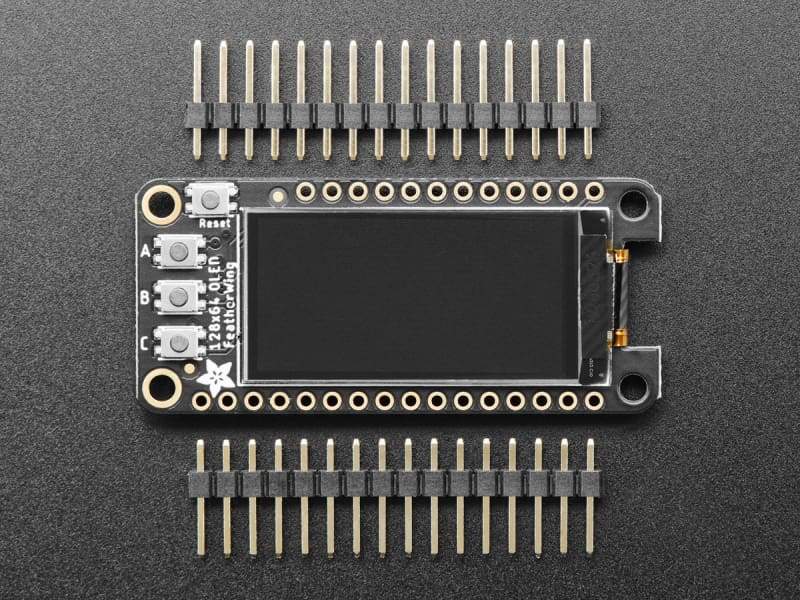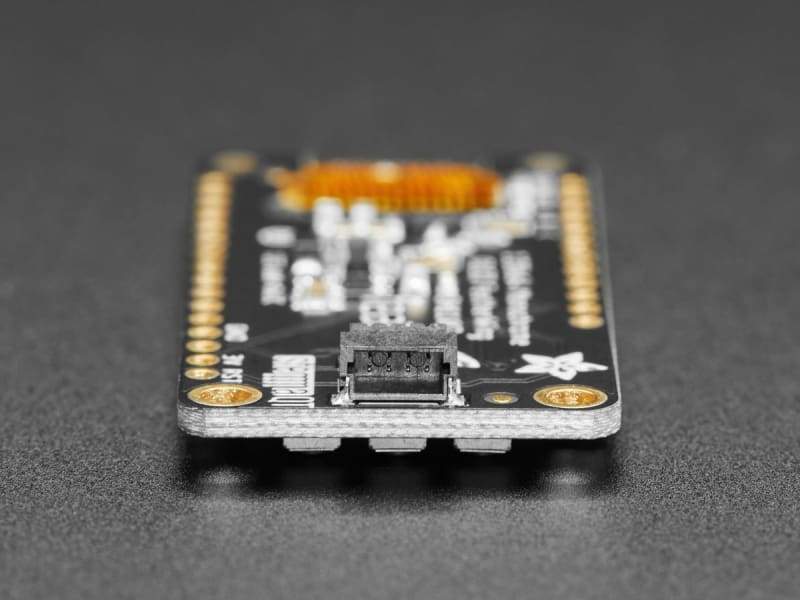FeatherWing OLED - 128x64 OLED Add-on For Feather - STEMMA QT / Qwiic
£13.33 ex VAT
This is the FeatherWing 128x64 OLED: it adds a gorgeous 128x64 monochrome OLED plus 3 user buttons to any Feather main board. Using Feather Stacking Headers or Feather Female Headers you can connect a FeatherWing on top of your Feather board and let the board take flight!
These displays are small, only about 1.3" diagonal, but very readable due to the high contrast of an OLED display. This screen is made of 128x64 individual white OLED pixels and because the display makes its own light, no backlight is required. This reduces the power required to run the OLED and is why the display has such high contrast; we really like this miniature display for its crispness! Adafruit also tossed on a reset button and three mini tactile buttons called A B and C, so you can add a mini user interface to your feather. If you've used the 128x32 OLED FeatherWing, you'll be happy to know that this FeatherWing is pin compatible for a quick and easy upgrade.
This display is an SH1107 which has an Arduino library but doesn't have CircuitPython support yet. The display uses only I2C so you can easily connect it up with just two pins used (plus power and ground!). There's an auto-reset circuit and a reset button on the top. They've even included a SparkFun Qwiic-compatible STEMMA QT connector for the I2C bus so you can plug and play any of our STEMMA QT, Qwiic or Grove I2C sensors and devices!
Tested working with all Feather boards. The OLED uses only the two I2C pins on the Feather, and you can pretty much stack it with any other FeatherWing, even ones that use I2C since that is a shared bus and comes with a set of 0.1" headers that are unattached, you'll need to solder them in to plug into your Feather board.
- PCB dimensions: 22.9mm x 50.9mm / 0.9" x 2"
- Display area: ~25.8mm / ~1.0"





